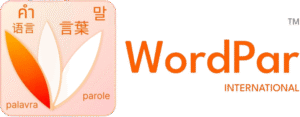
SUMMARY
Simultaneous interpretation involves real-time translation of speeches, requiring advanced linguistic skills and specialized equipment. WordPar offers professional simultaneous interpretation services globally, catering to various industries with expertise in multiple languages.

A medical translation company ensures precision through specialized workflows, expert translators, and compliance with local regulations.
Simultaneous interpretation was traditionally used in conferences and international settings at political and diplomatic levels. Today it is commonly used for trade negotiations, trainings, and presentations, thanks to the rise of online meeting platforms. Despite the increase in the use of simultaneous interpretation, many clients and users are not aware of the differences between the different kinds of interpretations.
Simultaneous interpretation service, as the name suggests, is the oral translation of speeches almost simultaneously in relation to the original speaker’s words. This means that within a few seconds of the commencement of the speech of the speaker, the interpreter too starts to speak, and then continues to speak simultaneously with the speaker.
This real time translation requires the ability to listen, think, process, and speak at the same time. It requires extreme mental dexterity and can pushes the interpreter’s faculties to the limit. While a translator is speaking the first part of a large sentence, she is already listening to the second half and thinking not only of words and ideas in the target language but also how to connect it to the first part of her own sentence.
Translating Real Time
There is a few seconds’ gap before the interpreter starts to speak. This gap is called the ear void span (EVS or décalage). Sometimes the interpreter requires greater time to make sense of the speaker’s idea. In such case, she relies on her short-term memory. If the EVS is too short or too close to the speaker, there are chances of error in syntax and sentence construction.
Since two people will speak at the same time, there will be interference. In most conference settings the a dio channels are segregated. The interpreters sit in glass cabins that are separated from the main public address. On the public address is heard the speaker’s voice. On the audio headphone channels, the voice of the interpreter is heard. Listeners can choose to listen to the channel audio or public address. Translation service providers must be equipped with the said technological
requirements to be able to deliver the said services.
Nowadays we have virtual meeting technology. For simultaneous interpretation, we require two or ]more audio channels. That is the only difference between regular and multilingual meeting platforms.
https://support.zoom.us/hc/en-us/articles/360034919791-Language-interpretation-in-meetings-and-webinars#h_ead62b5f-f2e1-44cd-aa62-58a4bc2e8bcf
In consecutive interpretation, the interpreter listens to a sizeable chunk of the speaker’s presentation, takes notes, and then explains the same in her language. However, in simultaneous interpretation, the processing and translation must happen almost real time, which means that the speaker and interpreter will be speaking at the same time.
Whereas the speaker need not necessarily hear what the interpreter is saying, the interpreter needs to listen AND speak at the same time. From the perspective of cost, simultaneous interpretation is more expensive than consecutive. It takes special skill, training and practice before an interpreter can be a simultaneous interpreter.
Simultaneous interpreters are scarce in comparison to regular interpreters and their time has a higher price. Translation service providers have to balance cost, quality and affordability while the client balances between utility and cost.
An interpreter is effective when he appreciates the nuances of languages and how two languages compare with each other in syntax and semantics. Agility in cross-linguistic communication comes naturally to enthusiasts of language.
In addition to interest, competence and proficiency in both languages is essential. The interpreter should be competent in spoken and written aspects of both languages.
Simultaneous (as well as consecutive) interpretation requires professional training. This is not simply the job of bilingual individuals. Interpretation is a formal professional activity and as such must be treated as such.
Interpreters are sometimes required to remember details and sift unnecessary information. They are at once required to summarise and still present the most relevant details thoroughly. A successful interpreter must possess this cognitive ability to summarise and retain details.
From a larger perspective, the role of interpreters is to facilitate communication, negotiation and goodwill. A good interpreter is one who sets foot into the profession with this mindset.
Sometimes, interpreters are required to balance awkward situations, mistakes, or temporary emotional upheavals of a speaker. Without changing the content of the text, interpreters may tone down the translations to avoid or delay confrontations. Although interpreters do NOT have a mandate to act as mediators, they can definitely play a role in translating speech in a word in a manner that can ease tensions or reduce escalations. Sometimes a temporary reprieve or avoidance of escalations for a few minutes allows speakers to regain composure without having antagonised the interlocutors or aggravating the situation to an irretrievable situation.
Simultaneous interpretation services are enabled by technological backing. The following equipment is essential in simultaneous interpretation.
• earpieces or headsets
• microphone
• two-channel audio
• audio technology support
Below are some YouTube links to further understand simultaneous interpretation better.
https://www.youtube.com/watch?v=twCpijr_GeQ
https://www.youtube.com/watch?v=Ol552QC_zhE
WordPar is a professional translation service provider in Hyderabad, Bangalore, Chennai, Mumbai, and Delhi. With our remote interpretation services, we have been providing interpretation and translation services to clients in the USA, Philippines, China, South America, Europe and practically all over the globe.
Our interpretation support extends for consumer surveys, trainings, medical diagnoses, and business negotiations.
We are an interpretation company In Bangalore, and we provide services of Indian language translator as also those for European and Asian languages.

WhatsApp us